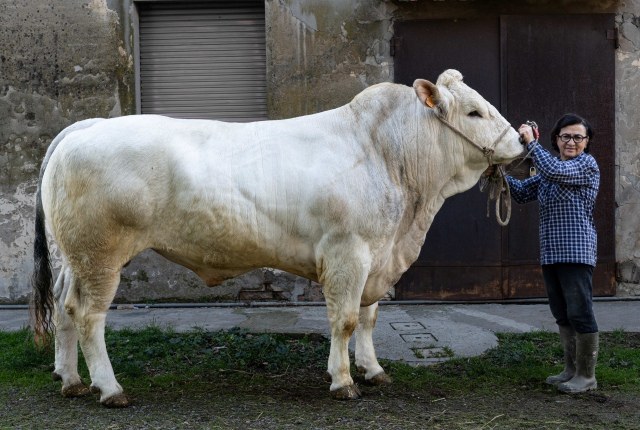Twenty images to illustrate the biodiversity of Emilia-Romagna's livestock, on display at the Department of Agricultural and Food Sciences at the University of Bologna. There is also a publication entitled 'Itinerari della biodiversità e dell’etnologia agro-zootecnica della Regione Emilia-Romagna e sua divulgazione' (Itineraries of biodiversity and agro-livestock ethnology of the Emilia-Romagna Region and its diffusion) related to the exhibition that presents portraits of local farmers with their animals, selected from ancient and native breeds.
The project is curated by Daniele Bigi, researcher at the Department of Agricultural and Food Sciences and author of the photographs, together with Francesco Perri, a regional official, and Alessio Zanon, a veterinarian and biodiversity expert.
The aim of the initiative is to present about thirty indigenous breeds bred in Emilia-Romagna (about 10% of the national total) and to explain their great value. At the same time, the research that led to the exhibition and publication (freely downloadable online) was an opportunity to update the records of these ancient breeds and add others that had not previously been considered, demonstrating the importance of livestock biodiversity and its sustainability.
"I was able to visit many farms and collect pictures that capture the relationship between farmers and their animals: donkeys, cattle, geese, ducks, horses, sheep and many others", says Daniele Bigi. "The exhibition focuses on them, the men and women who, despite the difficulties, have proudly dedicated themselves to breeding these breeds.”
In fact, these are animals that are often found in marginal areas, perhaps mountainous, and are therefore less productive than the more widespread and selected breeds: hence the need to promote and valorise them, explaining the great value they have thanks to their history and specificity.
"These indigenous breeds are less productive, but they are bred according to very ethical principles, in a more balanced situation and in harmony with the environment", confirms Daniele Bigi. "They are animals that are not forced to eat a specific diet, that live longer due to their rusticity and whose well-being is an important element.”
The project is the result of a collaboration between the Department of Agricultural and Food Sciences of the University of Bologna and the Emilia-Romagna Region, through the Department of Agriculture - Planning, Territorial Development and Production Sustainability Sector - Sustainable Agriculture Area, thanks to funding from the Ministry of Agriculture, Food Sovereignty and Forestry.




